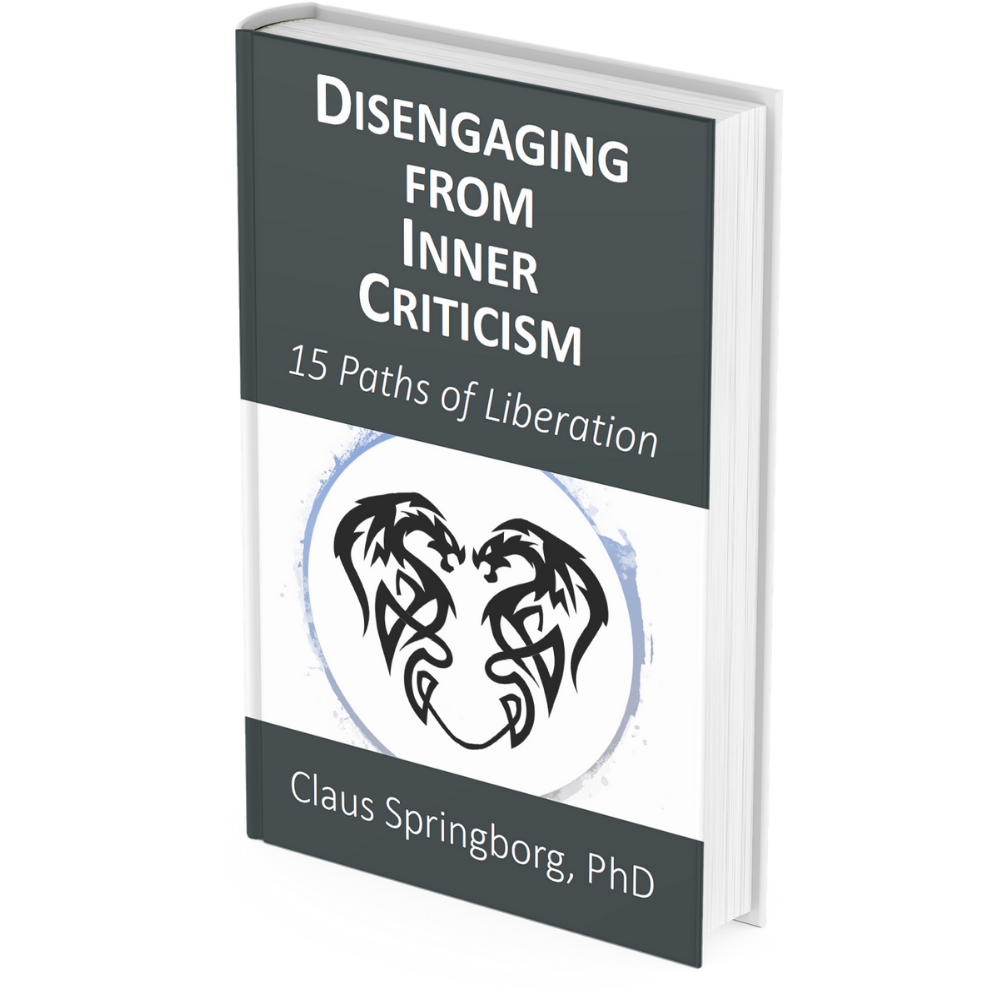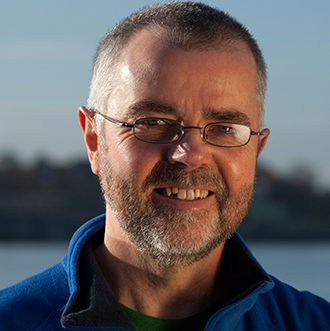Stay in Touch
Subscribe to Sensing Mind Institute’s newsletter to be kept up to date with publications, workshops, and special newsletter exclusives.
Self-criticism and negative self-talk are often unhelpful and counterproductive ways of pointing to forgotten or misunderstood resources in yourself
This book reveals a systematic and rigorous approach to working with self-criticism that helps you discover secret resources you didn’t know you had
The book helps you find a natural and effortless sense of confidence, vitality, peace, connectedness, joy and love
You can use the book for your own benefit or as an invaluable resource in your work as a coach or therapist

What you get
What people say about the book




2.1. Why is inner criticism difficult to detect?
2.1.1. Inner criticism is very familiar
2.1.2. Inner criticism is inconsistent
2.1.3. Inner criticism is constantly evolving
2.1.4. Inner criticism can appear as your own rational opinion
2.1.5. Inner criticism can feel instinctual
2.1.6. Inner criticism creates a sense of urgency that leaves no room for reflection
2.2. The main ways of detecting inner criticism
2.2.1. Detecting inner criticism by noticing deficiency emotions
2.2.2. Detecting inner criticism by noticing deficiency motivation
2.2.3. Others’ criticism of you
2.2.4. Your own criticism of others
2.2.5. Conspicuously absent thoughts, emotions, and behaviours
2.2.6. Working with inner criticism that is triggered in social situations
2.3. Chapter summary
3.1. Journaling
3.1.1. The situation
3.1.2. The behaviour, emotion, or thought that is criticised
3.1.3. Negative interpretation: The message of inner criticism
3.1.4. Deficiency-emotions: The emotion inner criticism generates in you
3.1.5. Deficiency-motivated reactions: Your reaction to inner criticism
3.1.6. Themes
3.2. The voices of inner criticism
3.2.1. The voice of judgment – put-downs, negative labels, and shame
3.2.2. The voice of fear – threats, scary scenarios, and fear
3.2.3. The voice of cynicism – devaluation, reduction, and disappointment
3.2.4. Combinations of the voices
3.2.5. Subtler versions of the voices
3.2.6. The voices and inner parts
3.2.7. Voices of criticism beyond judgement, threat, and cynicism
3.2.8. Inner criticism as conditioned responses and as modelled behaviour
3.2.9. Dealing with anger towards your parents triggered by work on inner criticism
3.3. Reactions to inner criticism
3.3.1. Complying
3.3.2. Combating
3.3.3. Collapsing
3.3.4. Combinations
3.3.5. Defence mechanisms as reactions to inner criticism
3.4. Criticism as generative force: Reactions as criticism and criticism of reactions
3.5. Chapter summary
4.1. The role of inner felt sense
4.2. Methods to disengaging from inner criticism
4.2.1. Path 1: Disengaging by not engaging
4.2.2. Path 2: Researching and cataloguing inner criticism
4.2.3. Path 3: Comparing the purpose and effect of inner criticism
4.2.4. Path 4: Laughing at the absurdity of inner criticism
4.2.5. Path 5: Owning back the strength and vitality of the inner criticism
4.2.6. Path 6: Taking the jewel from the mouth of the snake
4.2.7. Path 7: Turning awareness to what is beyond inner criticism
4.2.8. Path 8: Embracing the felt sense of loss
4.2.9. Path 9: Embracing the felt sense of pain and vulnerability
4.2.10. Path 10: Embracing the felt sense of parts you dislike in yourself (and in others)
4.2.11. Path 11: Disengaging from positive and negative self-concepts
4.2.12. Path 12: Allowing everything, including inner criticism, to move freely
4.2.13. Path 13: Appreciating the intension of parts that voice inner criticism
4.2.14. Path 14: Appreciating the intension of parts that listen to inner criticism
4.2.15. Path 15: Receiving the honey
4.2.16. Combinations of paths
4.3. Chapter summary
Author: Claus Springborg, PhD
Paperback: 256 pages
Publisher: Sensing Mind Institute (January, 2020)
Language: English
ISBN: 9 788797 177105
Product dimensions: 24 x 17 x 2 cm
Shipping Weight: 574 gram
Over the last couple of decades, I have studied various traditional and contemporary paths of personal development. In particular, I have studied the Enneagram with Claudio Naranjo, Tibetan Buddhism with Chökyi Nyima Rinpoche, and the Diamond Logos essence work with Faisal Muqaddam, Jeremy Klein, and Velusia Van Horssen. I also hold a master practitioner degree in NLP.
I did my doctoral research at Cranfield University in the UK. I researched how I could use modern cognitive science to understand the practices of personal development I had learned from the above-mentioned masters. In particular, I used cognitive metaphor theory and theories of embodied cognition. Sixty managers from various organisations participated in the research. The research is published in the book Sensory Templates and Manager Cognition: Art, Cognitive Science and Spiritual Practices in Management Education and several book chapters and academic papers on topics such as education, therapy, cognitive science, and leadership.
Today, I have established a school, Sensing Mind Institute, where I teach my methods of personal and spiritual development to therapists, psychologists, counsellors, managers and others who work professionally with people.
Apart from my work with Sensing Mind Institute, I am lecturing on embodied leadership, entrepreneurship, community building, and co-creation at Copenhagen Business School and The Royal Academy of Music in Copenhagen. I love making this knowledge available to young people.
I have a background in music, dance, and physics. In my teaching, I emphasise kindness, precision, and humour.
